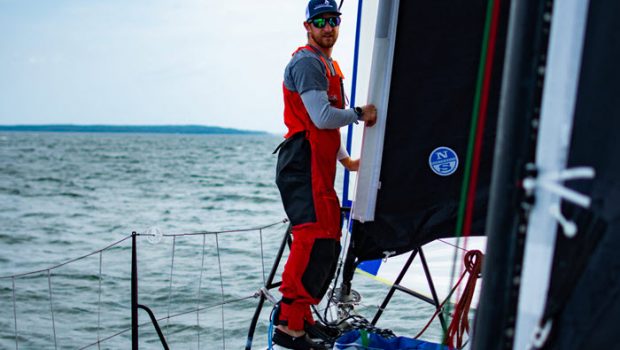The Rise of Doublehanded Sailing
Published on July 13th, 2020
Doublehanded sailing has gained momentum globally, as the gateway to getting back out on the water while remaining socially distant. It is also the latest event added to Paris 2024, so now is the time to find out more. To assist, North Sails has developed a Doublehanded Tool Kit.
In this report, Sam Fitzgerald, who has been cutting his teeth in the Class40 with Paris 2024 aspirations in sight, talks about his introduction to shorthanded sailing:
How did you get your first opportunities in doublehanded sailing?
I didn’t really get into doublehanded sailing until my early twenties and growing up in Connecticut, there weren’t a lot of opportunities to try it out either. I hope the discipline continues to grow in the US. More yacht clubs are providing opportunities for younger sailors to get into shorthanded sailing.
What was your first shorthanded sailing experience like?
My first shorthanded experience was one of those magical experiences you see in movies. We had a bomber run from Charleston to NYC in our Class40 during The Atlantic Cup and ended up fourth on the leg. We finished just before sunrise with our A2 up, screaming past the Statue of Liberty. It was truly amazing! After that, I was completely hooked and knew I wanted to pursue a career.
What maybe not so obvious skills did you need to learn or develop to be able to shorthanded sail?
Something that might not be so obvious to some is the need for organization and foresight. If you can’t organize your boat properly and be able to foresee your next step-up or step-down gear change, then your maneuvers are going to take forever. Shorthanded sailboats are set up to easily complete tasks around the boat, but it also means there are about four times the number of lines you need to manage.
On top of that, being able to use brute force to complete a task won’t work. This leads to winches always being used which leads to being locked out quickly. It’s really important for a shorthanded sailor to know exactly what needs to be done to step up and step down because if you see a squall line coming through and you call your co-skipper the last thing you have time for is to explain what to do next.
Complete interview… click here.








 We’ll keep your information safe.
We’ll keep your information safe.